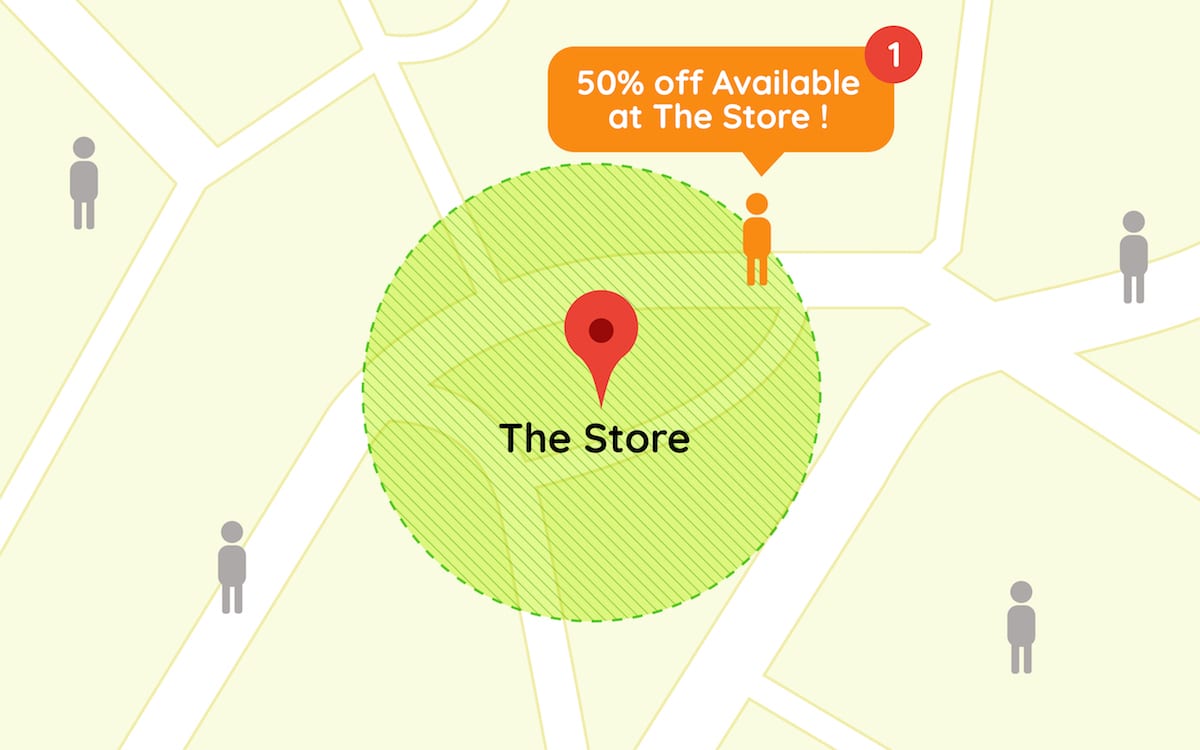By Christopher Burres
Every entrepreneur knows that a successful Internet marketing strategy is the key to growing their business. Let’s face it, technology is growing, and getting more advanced each and every day. Sometimes it can get a bit creepy… think about that time you passed by that store, then a few days later you start seeing their ads on social media. It makes you think, how did that ad get there? Geofencing.
But what is geofencing and how can you use it for your small business?
Geofening is the use of GPS or RFID technology to create a virtual geographic boundary, enabling software to trigger a response when a mobile device enters or leaves a particular area. The geofence is no more than a virtual geographic boundary around an area.
Now that you have an idea of what geofencing is, let’s discuss how you can use it for your small business.
How can geofencing help businesses?
You have probably experienced geofencing at some point. It could be something as simple as a dry cleaning app you downloaded to notify you when your dry cleaning was ready. When you’re carrying your cell phone and enter the geofenced area for the dry cleaners, a push notification comes up to remind you that an order is ready for pickup.
As a business owner, you could use a geofence to send a special offer when a customer enters your business location. There are a wide variety of uses for geofencing.
Another example is, a coffee shop could trigger a notification when a customer walked into a different coffee shop. Also a law firm could send a notification if a user entered a bail bonds office.
Remember, that a customer or a future customer doesn’t have to have your businesses app on their phone. The future customer, or present customer will see your businesses ad pop up on a free app or a website that has ads. Geofencing can also help enhance your company’s local sales.
Is geofencing right for your business?
When making this decision, there are a few things to consider:
- The culture and technical resources of your company
- The message
- Your target demographic
Does your company have an in-house marketing team that can do the planning, development and everything else that comes with setting up geofencing?
Does your company have a mobile presence? Companies with audiences who are primarily on mobile make the best candidates for geofencing.
Will geofencing enhance or weaken your company’s brand?
One of the most important pieces of every marketing campaign is to stay relevant with your target audience. The great thing about geofencing is, it allows you to target your mobile marketing message based on a consumer’s exact location and a specific time.
An example, if a customer enters the region of a specific clothing store, the store can deliver a 25% discount promotion ad straight to his or her cell phone. Because it is known that the individual is already close to the clothing store, it is much more likely that the user will be able to walk right in and receive that discount.
Should you be worried about privacy concerns with geofencing?
Protecting your privacy is always a pressing concern, but don’t worry; the customer is always in control. Geofencing requires the customer’s permission to share their location data, and the customer can revoke this permission at any time. Also, it is key to remember, the customer may not have realized they opted in.
Every business should also know their state laws about geofencing. For example, Massachusetts does not allow geofencing near medical facilities.
Your company should be transparent about geofencing and explain to the customer why you want to know their location. Most customers will be more than happy to support your company as long as they know why.
Make sure your company’s privacy policy is clearly documented and accessible online, and know that no one set of practices will cover every type of organization.
How effective is geofencing?
Geofencing can be extremely effective! Your company will be able to target people based the location of the consumer, which can attract even more people to your outlets. Consumers are more likely to engage with your company on a mobile device if they are provided with a relevant offer.
As a business, you should be following your customers and build your geofences where you know they will be, not where you want them to be. You should consider locations that are not just your own. Also remember, smaller is better, building a huge geofence doesn’t always work. Rule of thumb, a geofence should be less than four minutes of travel time from the targeted location, whether on foot or in a car.
Remember: Geofencing isn’t about blasting out messages to customers whenever they go somewhere. Geofencing is all about driving the right kind of traffic to your business!
Just make sure it has value, or you may end up losing customers. Your goal as a business should be to use geofencing to improve the overall experience, and provide a benefit to your customer.
Photo credit: Illustration of geofencing from TotallyMJ/Shutterstock

